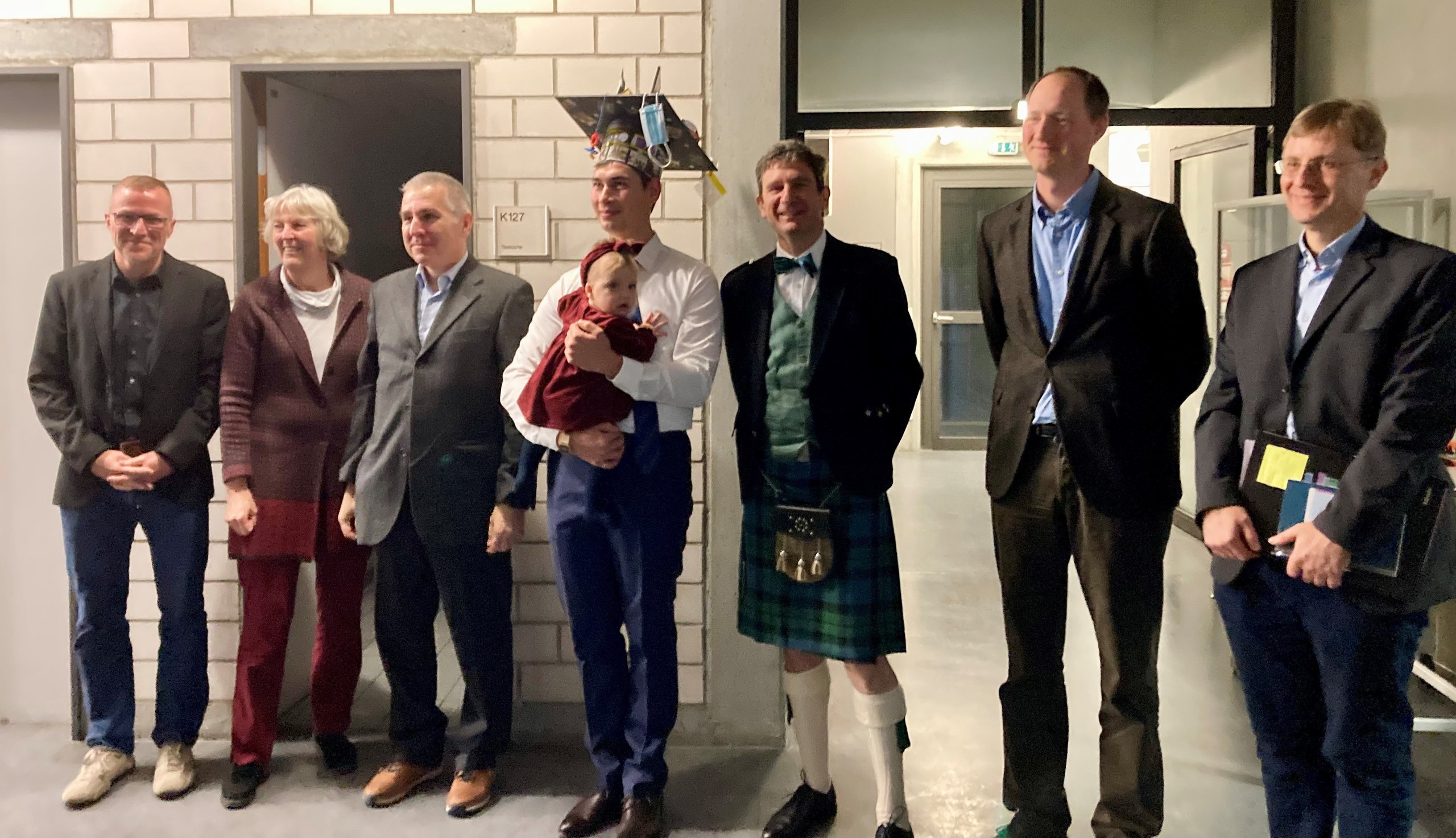Reliability of nanostructures
On the way to physical nanowire implementation and device fabrication, both chemical and thermal stability of the nanowires should be carefully analyzed. Due to their extremely high surface-to-volume-ratio, nanowire properties are expected to be influenced by adsorbates, surface chemical modifications, and morphological changes at elevated temperatures.
Our group demonstrated that metal nanowires are transformed into chains of nanospheres during annealing due to the Rayleigh instability. The driving force of this process is the minimization of surface energy of the initial wire. Both sphere size and spacing between adjacent spheres depend on the initial wire diameter, material, and crystallinity of the wire.
Recently, we reported the geometrical transformation of metallic copper nanowires, confined in graphitic coating, into crystalline nanoparticles of up to tenfold increased diameter. In situ transmission electron microscopy images at 500 ° C, recorded as movies, provided an exceptional real-time visualization of Cu draining out of the carbon coating. The solid content of the carbon tube is effectively evacuated over micrometer distances towards the open end, transforming each nanowire into a single monocrystalline, facetted Cu particle. Kinetic Monte Carlo simulations propose that this dramatic morphological transformation is driven by surface diffusion of Cu atoms along the wire/tube interface, thus minimizing the total free energy of the system. These investigations are relevant for applications of nanotubes including their use as storage media for atoms and small molecules, as nanoscale capsules for chemical reactions, and as nanopipettes for material delivery.
Recent Publications
- Low temperature annealing effects on the stability of Bi nanowires, M. Cassinelli, A. Romanenko, H. Reith, F. Völklein, W. Sigle, C. Trautmann, and M.E. Toimil-Molares*, Physica status solidi (a) 213 (2016) 603-609.
- Pipetting Nanowires: In-Situ Visualization of Solid State Nanowire to nanoparticle Transformation Driven by Surface Diffusion Mediated Capillarity, M.E. Toimil-Molares, W. Sigle, L. Roentsch, K.H. Heinig, C. Trautmann, R. Neumann, Advanced Functional Materials 22 (2012) 695.
- Influence of crystallinity on the Rayleigh instability of gold nanowires, S. Karim, M.E. Toimil-Molares, W. Ensinger, A.G. Balogh, T.W. Cornelius, E.U. Khan, R. Neumann, Journal of Physics D- Applied Physics 40 (2007) 3767.
- Morphological evolution of Au nanowires controlled by Rayleigh instability, S. Karim, M.E. Toimil-Molares, A.G. Balogh, W. Ensinger, T.W. Cornelius, E.U. Khan, R. Neumann, Nanotechnology 17 (2006) 5954.
- Fragmentation of nanowires driven by Rayleigh instability,M.E. Toimil-Molares, A.G. Balogh, T.W. Cornelius, R. Neumann, C. Trautmann, Appl. Phys. Lett. 85 (2004) 5337.
GSI contact: m.e.toimilmolares(at)gsi.de







